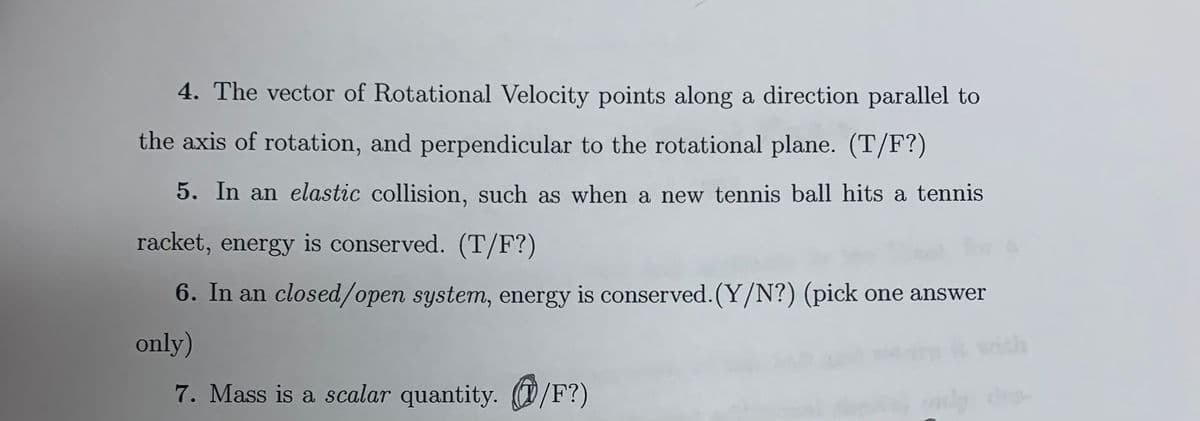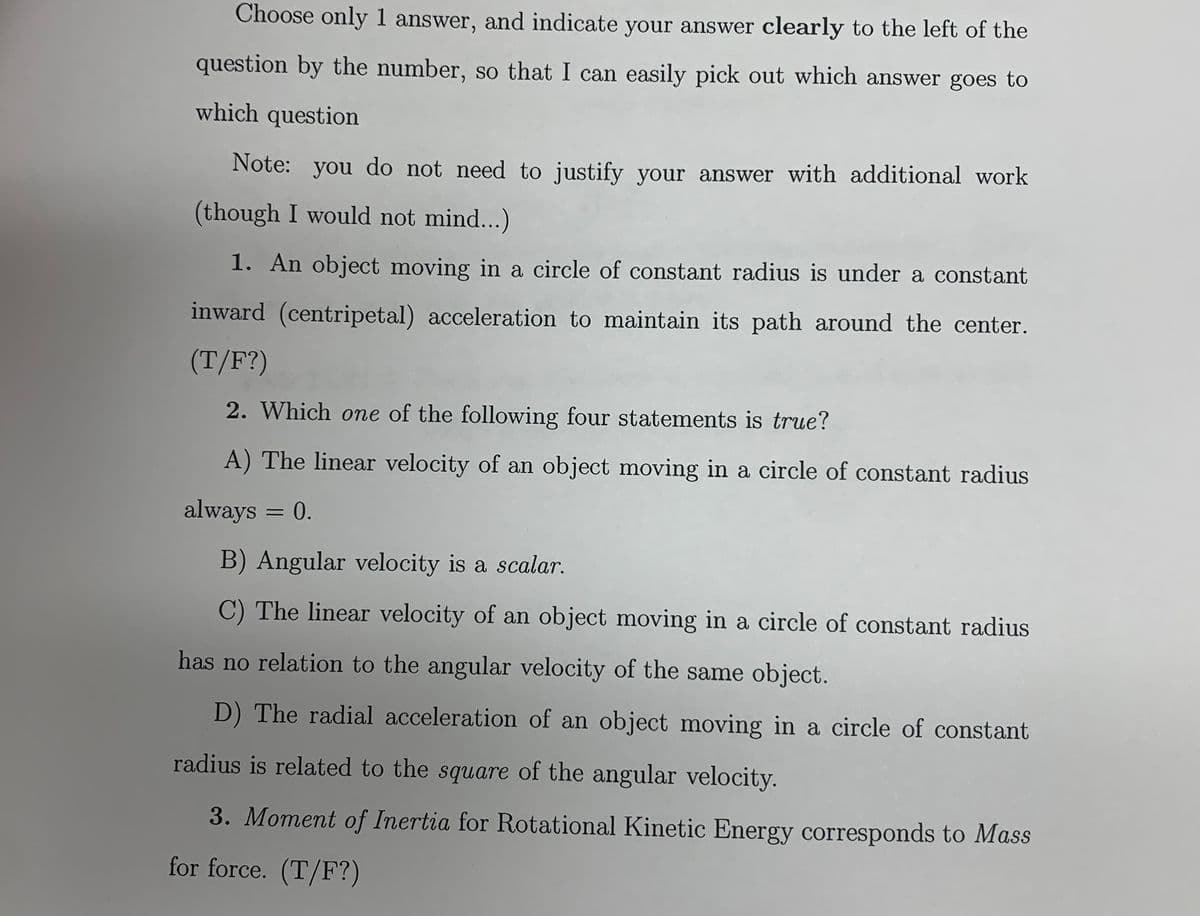4. The vector of Rotational Velocity points along a direction parallel to the axis of rotation, and perpendicular to the rotational plane. (T/F?)
4. The vector of Rotational Velocity points along a direction parallel to the axis of rotation, and perpendicular to the rotational plane. (T/F?)
Chapter1: The Study Of Motion
Section: Chapter Questions
Problem 19Q: (Indicates a review question, which means it requires only a basic understanding of the material to...
Related questions
Question

Transcribed Image Text:4. The vector of Rotational Velocity points along a direction parallel to
the axis of rotation, and perpendicular to the rotational plane. (T/F?)
5. In an elastic collision, such as when a new tennis ball hits a tennis
racket, energy is conserved. (T/F?)
6. In an closed/open system, energy is conserved.(Y/N?) (pick one answer
only)
7. Mass is a scalar quantity. (D /F?)

Transcribed Image Text:Choose only1 answer, and indicate your answer clearly to the left of the
question by the number, so that I can easily pick out which answer goes to
which question
Note: you do not need to justify your answer with additional work
(though I would not mind...)
1. An object moving in a circle of constant radius is under a constant
inward (centripetal) acceleration to maintain its path around the center.
(T/F?)
2. Which one of the following four statements is true?
A) The linear velocity of an object moving in a circle of constant radius
always = 0.
B) Angular velocity is a scalar.
C) The linear velocity of an object moving in a circle of constant radius
has no relation to the angular velocity of the same object.
D) The radial acceleration of an object moving in a circle of constant
radius is related to the square of the angular velocity.
3. Moment of Inertia for Rotational Kinetic Energy corresponds to Mass
for force. (T/F?)
Expert Solution
This question has been solved!
Explore an expertly crafted, step-by-step solution for a thorough understanding of key concepts.
Step by step
Solved in 2 steps

Knowledge Booster
Learn more about
Need a deep-dive on the concept behind this application? Look no further. Learn more about this topic, physics and related others by exploring similar questions and additional content below.Recommended textbooks for you


University Physics Volume 1
Physics
ISBN:
9781938168277
Author:
William Moebs, Samuel J. Ling, Jeff Sanny
Publisher:
OpenStax - Rice University

Glencoe Physics: Principles and Problems, Student…
Physics
ISBN:
9780078807213
Author:
Paul W. Zitzewitz
Publisher:
Glencoe/McGraw-Hill


University Physics Volume 1
Physics
ISBN:
9781938168277
Author:
William Moebs, Samuel J. Ling, Jeff Sanny
Publisher:
OpenStax - Rice University

Glencoe Physics: Principles and Problems, Student…
Physics
ISBN:
9780078807213
Author:
Paul W. Zitzewitz
Publisher:
Glencoe/McGraw-Hill